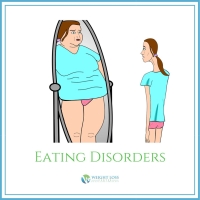About Lactose Intolerance
- Vitamins and Minerals
- Hits: 6750
Young children with lactase deficiency should not eat any foods containing lactose. Most older children and adults need not avoid lactose completely, but people differ in the amounts and types of foods they can handle. For example, one person may have symptoms after drinking a small glass of milk, while another can drink one glass but not two. Others may be able to manage ice cream and aged cheeses, such as cheddar and Swiss, but not other dairy products. Dietary control of lactose intolerance depends on people learning through trial and error how much lactose they can handle.
Lactose Intolerance and Food Sensitivity Diets
For those who react to very small amounts of lactose or have trouble limiting their intake of foods that contain it, lactase enzymes are available without a prescription to help people digest foods that contain lactose. The tablets are taken with the first bite of dairy food. Lactase enzyme is also available as a liquid. Adding a few drops of the enzyme will convert the lactose in milk or cream, making it more digestible for people with lactose intolerance.
Lactose-reduced milk and other products are available at most supermarkets. The milk contains all of the nutrients found in regular milk and remains fresh for about the same length of time, or longer if it is super-pasteurized.
Lactose Intolerance and Balanced Diet Nutrition
Milk and other dairy products are a major source of nutrients in the American diet. The most important of these nutrients is calcium. Calcium is essential for the growth and repair of bones throughout life. In the middle and later years, a shortage of calcium may lead to thin, fragile bones that break easily, a condition called osteoporosis. A concern, then, for both children and adults with lactose intolerance, is getting enough calcium in a diet that includes little or no milk. In 1997, the Institute of Medicine released a report recommending new requirements for daily calcium intake. How much calcium a person needs to maintain good health varies by age group. Recommendations from the report are shown in the following table.
| Age group | Daily Calcium (mg) |
| 0-6 months | 210 mg |
| 7-12 months | 270 mg |
| 1-3 years | 500 mg |
| 4-8 years | 800 mg |
| 9-18 years | 1,300 mg |
| 19-50 years | 1,000 mg |
| 51-70+ years | 1,200 mg |
Also, pregnant and nursing women under 19 need 1,300 mg daily, while pregnant and nursing women over 19 need 1,000 mg.
In planning meals, making sure that each day's diet includes enough calcium is important, even if the diet does not contain dairy products. Many nondairy foods are high in calcium. Green vegetables, such as broccoli and kale, and fish with soft, edible bones, such as salmon and sardines, are excellent sources of calcium. To help in planning a high-calcium and low-lactose diet, the table that follows lists some common foods that are good sources of dietary calcium and shows how much lactose they contain.
Recent research shows that yogurt with active cultures may be a good source of calcium for many people with lactose intolerance, even though it is fairly high in lactose. Evidence shows that the bacterial cultures used to make yogurt produce some of the lactase enzyme required for proper digestion.
Calcium and Lactose in Common Foods
| Vegetables | Calcium Content | Lactose Content |
| Calcium-fortified orange juice, 1 cup | 308-344 mg | 0 |
| Sardines, with edible bones, 3 oz. | 270 mg | |
| Salmon, canned, with edible bones, 3 oz. | 205 mg | 0 |
| Soymilk, fortified, 1 cup | 200 mg | 0 |
| Broccoli (raw), 1 cup | 90 mg | 0 |
| Orange, 1 medium | 50 mg | 0 |
| Pinto beans, 1/2 cup | 40 mg | 0 |
| Tuna, canned, 3 oz. | 10 mg | 0 |
| Lettuce greens, 1/2 cup | 10 mg | 0 |
| Dairy Foods | ||
| Yogurt, plain, low-fat, 1 cup | 415 mg | 5g |
| Milk, reduced fat, 1 cup | 295 mg | 11g |
| Swiss cheese, 1 oz. | 270 mg | 1g |
| Ice cream, 1/2 cup | 85 mg | 6g |
| Cottage cheese, 1/2 cup | 75 mg | 2-3g |
| Adapted from Manual of Clinical Dietetics. 6th ed. American Dietetic Association, 2000; and Soy Dairy Alternatives. | ||
Lactose Intolerance - Need For Balanced Diet
Clearly, many foods can provide the calcium and other nutrients the body needs, even when intake of milk and dairy products is limited. However, factors other than calcium and lactose content should be kept in mind when planning a diet. Some vegetables that are high in calcium (Swiss chard, spinach, and rhubarb, for instance) are not listed in the chart because the body cannot use the calcium they contain. They also contain substances called oxalates, which stop calcium absorption. Calcium is absorbed and used only when there is enough vitamin D in the body. A balanced diet should provide an adequate supply of vitamin D. Sources of vitamin D include eggs and liver. However, sunlight helps the body naturally absorb or synthesize vitamin D, and with enough exposure to the sun, food sources may not be necessary.
Some people with lactose intolerance may think they are not getting enough calcium and vitamin D in their diet. Consultation with a doctor or dietitian may be helpful in deciding whether any dietary supplements are needed. Taking vitamins or minerals of the wrong kind or in the wrong amounts can be harmful. A dietitian can help in planning meals that will provide the most nutrients with the least chance of causing discomfort.
Hidden Lactose in Your Diet
Although milk and foods made from milk are the only natural sources, lactose is often added to prepared foods. People with very low tolerance for lactose should know about the many food products that may contain even small amounts of lactose, such as:
- bread and other baked goods
- processed breakfast cereals
- instant potatoes, soups, and breakfast drinks
- margarine
- lunch meats (other than kosher)
- salad dressings
- candies and other snacks
- mixes for pancakes, biscuits, and cookies
- powdered meal-replacement supplements - Some products labeled nondairy, such as powdered coffee creamer and whipped toppings, may also include ingredients that are derived from milk and therefore contain lactose.
- lactose is used as the base for more than 20 percent of prescription drugs and about 6 percent of over-the-counter medicines. Many types of birth control pills, for example, contain lactose, as do some tablets for stomach acid and gas. However, these products typically affect only people with severe lactose intolerance.
Lactose Intolerance Diet - Read Food Labels
Smart shoppers learn to read food labels with care, looking not only for milk and lactose among the contents, but also for such words as whey, curds, milk by-products, dry milk solids, and nonfat dry milk powder. If any of these are listed on a label, the product contains lactose.
Lactose Intolerance Diet - Summary
Even though lactose intolerance is widespread, it need not pose a serious threat to good health. People who have trouble digesting lactose can learn which dairy products and other foods they can eat without discomfort and which ones they should avoid. Many will be able to enjoy milk, ice cream, and other such products if they take them in small amounts or eat other food at the same time. Others can use lactase liquid or tablets to help digest the lactose. Even older women at risk for osteoporosis and growing children who must avoid milk and foods made with milk can meet most of their special dietary needs by eating greens, fish, and other calcium-rich foods that are free of lactose. A carefully chosen diet, with calcium supplements if the doctor or dietitian recommends them, is the key to reducing symptoms and protecting future health.
See also Lactose Intolerance Diet
SOURCE: National Institute of Diabetes and Digestive and Kidney Diseases. U.S. Department of Health and Human Services, National Institutes of Health, 2002. Website: www.niddk.nih.gov/














